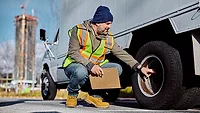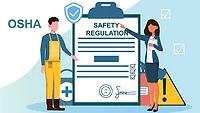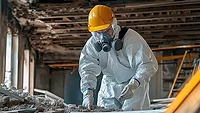Navigating Visits from Compliance Companies

Introduction
Many Restorers think they will never be visited, let alone fined, by OSHA or the EPA. From my past conversations with them, I have found that most believe:
- They are too small to be visited
- OSHA/EPA isn’t interested in their residential work
- Very few OSHA/EPA regulations apply to their work
In other words, they can “fly under the radar” for the life of their business.

Photo credit: ArtShotPhoto / iStock / Getty Images Plus via Getty Images
For many small companies, the odds of being visited by OSHA/EPA are probably very slim, given the number of inspectors for either agency versus the number of small jobs being perform every day in the United States. Total SDS, a regulatory compliance company, ran the numbers and claims there is a 1% chance of being inspected by OSHA.
However, the chances are not zero! If you perform an Internet search for OSHA or EPA violations, you will find restoration companies who have been cited. Some of the EPA violations are much larger than the OSHA violations, but that’s a story for a different day!
Point being, many restoration companies do get inspected and wind up with violations that can have big impacts on a small operation. Given that, I would like to provide you with a basic review of what I have observed and experienced. For simplicity, I’m going to break this down into two categories:
- Targeted inspection of a specific company
- Random inspection

Photo credit: Serkan Toröz / iStock / Getty Images Plus via Getty Images
Targeted Inspection
For this scenario, OSHA or the EPA is looking to inspect the business location or a jobsite of a specific company. I have observed a number of ways these inspections are triggered; some examples are:
- Employee Complaint: an existing or former employee has filed an OSHA complaint against the company. I hear about this at least a couple times a year. Typically, the complaint is filed by a disgruntled former employee. Sometimes the complaint is valid and sometimes the complaint is fabricated. Regardless, OSHA will investigate the complaint through an off-site investigation (e.g. phone call or mail) or on-site inspection. (2)
- Customer/Neighbor/Competitor Complaint: somebody other than an employee has called the regulator and filed a complaint. This could be a customer complaining about dust throughout a house (e.g. lead-based paint dust or asbestos). It could be neighbor complaining about paint being dumped onto their lawn or into a storm drain. Or it could be a competitor complaining about unlicensed or unpermitted work. Again – these complaints may be valid or fabricated; however, the end result is an inspection!
- Emergency Responders reporting to a Regulator: the police, firefighters, or EMT’s have called the regulator to report what they observed at the work location. I have experienced this in the past after a fall injury; the police called the local OSHA office to report there was a fall injury on a jobsite. These reports are due to an actual injury or incident, so an inspection is highly likely.
- Customer calls Regulator for Information: unlike the complaint scenario, this is based on questions the customer has for the regulator. For example, I was told about a customer calling a state environmental group with questions on asbestos testing and management. In that case, the regulator contacted the Restorer and sent a cease-and-desist letter on incorrect asbestos sampling practices.
- Focused Inspections: a regulator has targeted specific types of high-risk work (e.g. working from heights, high heat, or roofing) and goes into a city/county with a task force to specifically inspect jobsites with that type of work. Many times, the task force works with the local permitting group to identify jobsites to visit. Remember, you may not be doing roofing work, but a contractor beside you or across the street may be performing roofing, have a focused inspection, and the inspectors also end up visiting your jobsite (see the Random Observation Section below).
- Your Dumpster is Flagged at the Landfill: a dumpster has hazardous waste or materials that should be recycled and is taken to a landfill to be dumped as construction waste. During the dumping process, a person monitoring what is dumped observes that waste and stops the dumping process (e.g. asbestos materials, spray paint cans, or fluorescent bulbs). The hauler then has to bring the dumpster back to the jobsite or to a different waste site. Sometimes the local regulators are called to manage disposal of the waste and assess fines. The subsequent disposal expenses and fines get charged to the Restorer who rented the dumpster and filled it.
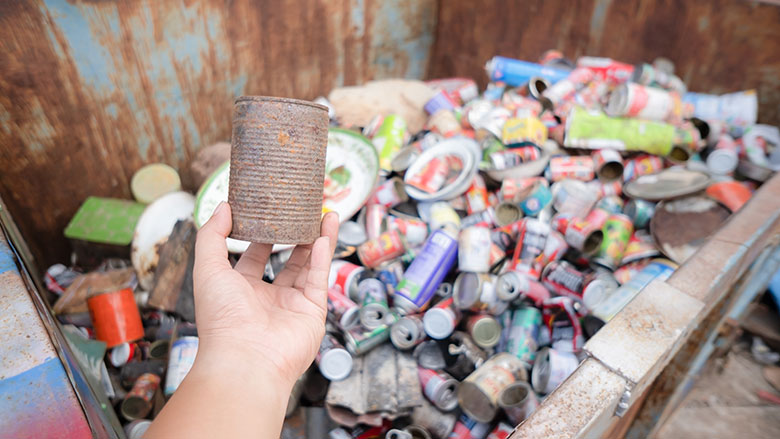
Photo credit: Ritthichai / iStock / Getty Images Plus via Getty Images
Random Observation
This category relates to a regulator driving by a jobsite or visiting nearby jobsites and observing a violations on your jobsite.
- OSHA-observed violation: This can include OSHA inspectors traveling to a planned inspection and observing your employees engaged in work that could imminently injure them (e.g. working from a balcony without fall protection or working from an aerial lift without a harness and lanyard). OSHA inspectors are required to immediately investigate situations when they observe employees in imminent danger. (3)
- EPA/Environmental-observed violation: just like an OSHA observation, an environmental regulator observes or is informed of a violation. This can include the random observation of loading hazardous materials into a construction waste dumpster (e.g. asbestos materials or fluorescent bulbs). I have also received calls in the past from a local fire department about liquids running out of a dumpster at our jobsite and about to enter a storm drain (requires absorptive materials to capture liquid and/or determination of what the type of liquid).
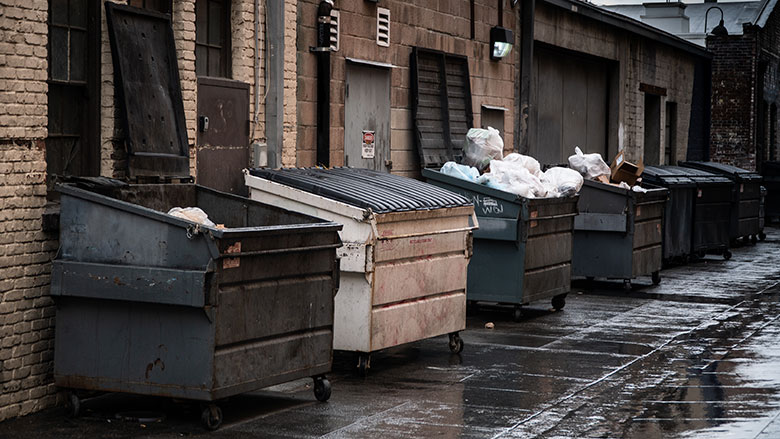
Photo credit: Spiderplay / iStock / Getty Images Plus via Getty Images
How Do I Avoid/Minimize Inspections?
Obviously, being compliant with OSHA/EPA regulations will help minimize, but never eliminate, the chance of being inspected. The articles I write in this column will help you with compliance. However, I have found that there are benefits from learning how companies end up being inspected or issued violations. First, it seems that just being aware of the scenarios I mention in this article help motivate a company to remain vigilant with their safety or environmental practices. Second, I can personally attest that every time I hear of a unique situation that lead to a regulatory inspection/violation, I think about the vulnerability our company may have and how I can train our employees on these situations. Maybe you can apply this approach to minimize inspections or pass inspections?
Summary
I have a theory that most inspections and violations are much more unexpected and random than most companies envision. Based on this theory, I believe it would be helpful if Restorers used this knowledge as a stimulus to begin basic safety and environmental compliance or enhance existing practices. Then, when a random inspection occurs, the Restorer will be less likely to face serious violations, fines, and corrective actions!
References
- TotalSDS: What Triggers an OSHA Inspection? https://www.totalsds.com/what-triggers-an-osha-inspection/#:~:text=Ways%20To%20Increase%20Or%20Decrease,ll%20be%20inspected%20by%20OSHA.
- Occupational Safety and Health Administration: Federal OSHA Complaint Handling Process. https://www.osha.gov/workers/handling#:~:text=Phone%2FFax%20Investigation,-OSHA's%20phone%2Ffax&text=OSHA%20telephones%20the%20employer%2C%20describes,corrective%20actions%20taken%20or%20planned.
- Occupational Safety and Health Administration: Field Operations Manual (FOM), Chapter 11, Imminent Danger, Fatality, Catastrophe, and Emergency Response. https://www.osha.gov/enforcement/directives/cpl-02-00-164/chapter-11
Looking for a reprint of this article?
From high-res PDFs to custom plaques, order your copy today!




